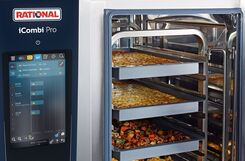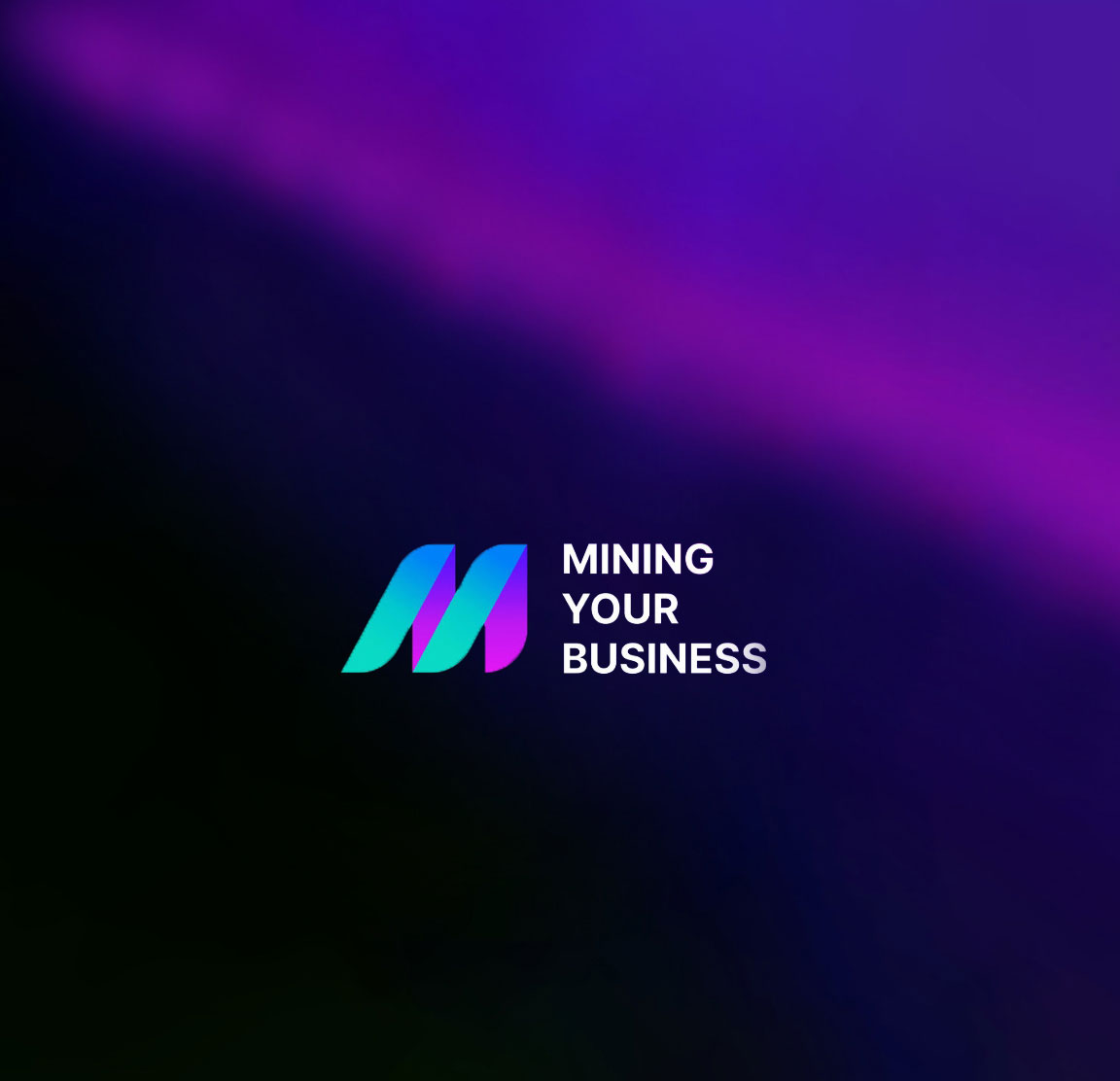Patrick:
Welcome to the second episode of The Mining Your Business Podcast. A show all about process mining, data science and, advanced business analytics. I'm Patrick and with me as always, my colleague Jakub. Hi there.
Jakub:
Hey, Patrick.
Patrick:
Today's episode is all about what is Process Mining and how does it work, and we'll share some Real-Life Examples of process mining implementations. Stay tuned.
Jakub:
Welcome to the second episode. And I'm very happy that today we we will actually covering a topic which you are probably listening to, or which is the reason why you are listening to this podcast. And that is - what is process mining? So what how does it work? What does it do? What can you do with process mining? What kind of processes? And let's say a project can you understand as being a process, finding projects and what can you cover with it and everything? This will be covered in today's episode where as usual with Patrick, who I will right away go and ask Patrick, what is process mining and how do you understand the process mining?
Patrick:
Well, yeah, that's a that's a good question. So when I first started here Processand, I didn't actually quite understand what process mining was, but of course through working here for some time now from what I understand, process mining is the definition of an object inside your business and tracing and following this object throughout your organization and seeing the activities that are attributed connected to said object. Right. So we can also straight up look at the definition of what process mining is. And here we see that process. Mining is an analytical discipline for discovering, monitoring and improving real processes by extracting data from all sorts of today's information systems. Many processes are creating a digital footprint and the goal of process mining is to connect the dots of all relevant actions regardless of their origin.
Jakub:
Very nice.
Patrick:
Yeah, exactly. So that's a little wordy So I think it would help if we kind of gave an example of what this could look like.
Jakub:
For sure. I will probably take that one up. And if you listened to our first episode, which if you didn't, I recommend you should. So go back, stop this one. I just go to the first one. But if you did, you know I will actually giving an example of a coffee bean. So if we are talking about the process, let's imagine a coffee bean, which we all so much enjoy and drink every day. How such a coffee bean had to be grown somewhere. It has to be produced. It had to be harvested. It had to be packed. And shipped away across the globe because as we know, coffee usually grows in a higher altitudes in a warm environment. So sorry, Europe, no coffee no coffee fields for you, at least for now. Let's see what global warming brings Right. Maybe we get to harvest the coffee in the Alps next to Munich one day. Who knows? Well, anyway, such a coffee bean can be for us. This a unique ID or unique object that we are then tracking on its path or on its process, on its journey. So we first has a bean that we grow. And so we are probably be interesting in how long it grows, how well it grows. What where the shape, how what was the impact of the, let's say, the weather or the environment where it was actually being grown in. So these would be all the inputs that we could collect to such a coffee bean and then we could go a step further. Right. So when the coffee gets harvested, we would probably be interested in a way that it will harvest it. So like what machines are used for harvesting? What was the temperature that it was then processed on? Meaning that if you harvest the coffee, you will want a roasted so you can track the temperature, you can track the time of the roasting, and then you would go into quality and like you have a bean, which you are shipping somewhere and you probably have a higher quality coffee and a lower quality coffee. And all of this is an information that is part of this process that you can somehow, if it's being collected, it can be connected to this specific bean and do your specific coffee. And from that, you can actually create a very good picture of what is the overall process of producing of such a coffee bean. And before we even like there is so many more steps like I mentioned shipping. So you would probably be interested in how well is or how fast is the coffee shipped from the place where it grows to the consumers and then even like what is the preparation of the coffee? So you would make so many sub processes of just one single coffee bean that it's almost Mind-Blowing for me.
Patrick:
Yeah. So I think it would then also help. So now we have this little metaphor of tracing a coffee bean. Now, I think if we imagine, if we take this metaphor a little bit further and say that you are now the owner of a coffee bean plantation, in, let's say, and you and now our material that we are selling is the coffee bean. Right now, all of a sudden, we have some business processes attached here, so you get an order for some coffee beans. And now the journey of that coffee bean as a process starts, right. We got a plant enough seeds. So to cover the order, right. We have to watch them grow in the time to actually satisfy the order in the amount of time that, you know, we set in the order. And now we can also look at not just sending of the of the coffee bean but also sending the the invoice to the customer who wanted the coffee bean. Right. Sending it in a shipment, watching it get there and then receiving the order and receiving the invoice and then finally, hopefully paying the the invoice. Right.
Jakub:
Exactly, and there are so many levels at which you are looking at the different processes as such a company, as you were mentioning, you don't at certain point, you don't only look at your own product, which would be that preparation and producing of the coffee bean. But it would be also be the invoice management or, you know, making sure that the orders are delivered on time and with good precision so that when Starbucks orders ten tons of coffee beans that you don't actually deliver and them 10 kilograms and instead of that, instead of Starbucks, you deliver ten tons to your local coffee house, which they probably wouldn't know what to do with it. These are exactly the kind of things.
Patrick:
Yeah. Or quality management, making sure that your coffee beans are packaged properly so that when the company that made the sales order finally gets the coffee that they don't complain that half the coffee spilled out on the way there. So this is obviously all things that are connected to that one being that we can all tie together to that one bean. So and that's kind of a, I think, a good metaphor for processed mining.
Jakub:
For sure and now imagine that in the world, how many companies that actually could consider such a process mining? And in my eyes, it could be essentially any company from one person to huge international corporates because essentially in every company, no matter what you do, you usually follow a given a process. So I am speaking for my own experience. So I'm running also a personal finance blog on the side. And I just know that whenever I am creating an article, I follow a certain steps right? So I first have to write the article, then I have to edit it, I have to prepare it for publishing, get the pictures, relevant pictures and so on and so forth. And this order is a process. And ideally, if I wanted to grow and get better and eventually employ more people, then I would look at this whole process of writing and publishing an article, and I would probably try to improve it and to look at the categories or areas where I could probably make it a bit faster make it a bit better. And eventually that leads to, you know, you wanted one thing to do, the process mining journey.
Patrick:
Yeah, yeah, exactly. So now that you, I guess, know a little bit about what process mining is, do you want to talk about the technical side?
Jakub:
Of course, Patrick. So we are both we as both data scientist and data engineer. So I guess you can just go and start with the technical level of the process mining what do you do actually, and how does it work?
Patrick:
Well, you know, we usually get to the clients at some level where we discuss kind of what they need from us kind of what they want to analyze, what parts of their business do they want to mine their process for. So at that point, we kind of already know what type of data we need to connect, you know, and kind of gather the information that we need to give them a big list of, Hey, these are the things we need. Servers or that can extract the data from your systems. We need to know exactly where and what you store, what's with what things, and so on and so forth. So it's kind of like a little, you know, getting on the same page of what we need technically. Right. So that can take a little bit of time, right? Because obviously we need to know that we have the right data. We need to validate that it's the right data, that the data is transported securely. That's obviously very important and that the that we don't interrupt any business dealings throughout the day if we load too much and things like that. These are all things that we need to iron out before the actual implementation can start.
Jakub:
Then we essentially start with the collecting data, which sometimes can be a tricky as well because for different reasons, the R&D architecture is always kind of a problem that we need to sort out. Sometimes it's very easy, sometimes it gets a bit more complicated especially the bigger the company, the bigger the requirements. There are a lot of norms and security obstacles that we really have to be careful about so that we don't, let's say, extract some data. That could be very, what's the word Patrick? Very delicate, you know, and officially when it comes to usernames.
Patrick:
Yes, exactly. So just, you know that we sodomize every data that we can. That is those required, you know, so we don't, you know, take things into a system where it should not be.
Jakub:
So, you know, it's 2020 or almost 2021. And the data security in general is a huge topic that really always needs to be discussed in advance. So then the next steps, once we actually are able to collect the data to connect to the system and we essentially pull the data to another environment, really depending on what we're talking about, whether it's on premise, on cloud, but this is a bit too technical that we don't want to get into. Right now, I bet that will be this episode where we are discussing this more into the deep. However, let's imagine that we have the data that you are interested in and it doesn't really matter what process it is, we just need to get the data into one lake, into one pool together, and then we can start working with them. So what we do then is that usually most I would say most of the mining projects are somehow executed and built on a language called SQL. So what we do, we are running some queries which help us or mine or get the appropriate information that you are looking for. So an example would be that you want to know. You want to have the information of when the purchase order in case of our P2P process was created. Right. So we and in our job as a data scientist is to know where do I get this information from? So I need to build queries and I need to build and back-end logic in order to provide you - the end user with something that we called a cases table where we basically create a clearance for each activity that we defined you and we give you the information that represents it, which usually consists of like the ID, which it could be the coffee bean, it could be the number of the purchase order, or it could be imagine that you are an insurance company and that you are tracking the claims. And it could be for you a claim number, for instance.
Patrick:
Exactly. So it's like a journey of having the object that we defined and all the points of data that we want to analyze within the process and how we relate that one object back to those tables that we define. For example, the claims like you mentioned, how do we connect the purchase order to the claims in some system that's very easy. In some systems that's a little bit more tricky. But here we go on a rather more known journey. If we know the the systems like SAP or something, then these kinds of connections are very familiar to us. But other in other cases, these can be own creations on tables and things like that. So we have to make sure that we identify the exact connection between these activities and make sure that the steps of the process actually belong to eachother.
Jakub:
And it's actually pretty fun because if you think about it, this whole process gives you a lot of potential for creativity, for being creative, because there is a lot of ways of how you can actually work with the data and create the kind of information that the end user or the business user or whomever is going to be reading the data you will give. So that's actually nice.
Patrick:
And it's actually also very important in that way to actually be you to optimize it, you know, because there's several ways to to get to where you need to go in the data, but to do it efficiently in a way that the queries actually execute in a timely manner, that's also a knowledge thing, you know, an experience.
Jakub:
Thing, which we know quite well from our own experience, don't we?
Patrick:
Yes, exactly. The first queries I've written were so slow, you would have no idea.
Jakub:
But it's not our fault for sure.
Patrick:
No, of course not, it's never our fault. Just kidding, haha.
Jakub:
And when we actually have all the data, we have it preferred, we have it ready to go. What we need to do, and that's actually the step that everybody's interested in is creating front-end, which means that, you know, if you build first class queries and you know your scripts run with the speed of light, that's all nice. But if you cannot deliver that in a very nice and in an easy way for the end user to read it, then you you're all your back-end work is kind of useless. You really need the way to visualize everything in a very nice and easily understanding way so that whoever's going to deal with your data, whatever his position or her position is, she just comes and knows exactly where to click and what it's actually telling her.
Patrick:
Exactly. Exactly. It should be pretty much that you set up your dashboard and it should be self-explanatory on how to use it and where to find your data. To make sure you recognize your own data and things like that. So a lot of attention to detail and a lot of time is put into actually creating the the dashboards, making sure that it's actually fits to what the use cases are that were defined at the start of the project.
Jakub:
Now, of course, it's very easily said and done and usually when we do our projects, we have some kind of a handover phase. When we walk the end users through the reports, we show them where is what and how does it work. But then the next phase is actually the data validation. And that that is kind of tricky because you know, when you are measuring the same thing where two parties are measuring the same thing, I can guarantee you that they are measuring something different and that's usually the biggest obstacle for us. And it's actually harmonizing the way that we and the customer are looking at the KPI.
Patrick:
So sometimes it's difficult of course, to kind of go from the KPIs that they're used to to those same KPIs, but related to a process, right? If they've have never seen a process before or their process visualized, it can be sometimes a little daunting for them to see the KPIs kind of represented in a different way or connected to things that they never even thought of. So it can be a little bit tricky to kind of grasp, grasp them in that way and say, hey, this is still the same KPI, you just have to measure this in this way.
Jakub:
If I use the example with the coffee beans, imagine that we give you an exact time when the coffee bean was created, and then you were like, Well, what does it mean, created? Does it mean when the coffee bean was like fully ripe and grown? Was it when it was harvested, or was it when I packed it and shipped it to the customer? So like looking at the same or almost the same information which might be clear to us, doesn't necessarily mean that it's clear to customer. And this is something that usually takes quite, quite a few rounds before we understand each other well enough to actually be comfortable with working with the data.
Patrick:
Yeah, exactly, exactly. And this is also something that we do throughout the project, right, to kind of give our, our clients a little bit of a, of an introduction on how to use the dashboards on all those things. But the real value and the real adoption we see in the value creation phase.
Jakub:
Yeah, for sure. Because then it's nice to have data, but you know, big companies, they have dozens of dashboards and dozens of BI tools and the adoption itself is very, very difficult. And very, very vital I would say as well because at the end of the day, if the adoption is low end or mild, then well all the work that we've done or that any other partner, implementation partner has done is useless, I would say.
Patrick:
Yeah. Yeah. So you really have to kind of make sure that the clients know what's to what they're getting themselves into with this because it's not just a nice bi tool to have it. So it's a really fundamental way of looking at their business and what they can improve.
Jakub:
And for good reason. We believe it's very good to actually tell the story with the data so that when we deliver on something, let's say that again, I will bring up the purchase, the process. Then what we can do is tell them, okay, so this is how you start it and here are the bottlenecks. This is what was what has been going on. You can put some numbers on the bottlenecks that they are experiencing and there you go. You've got a very nice use case and a very tangible thing that you can immediately act upon. So this actually there is another room for creativity of a data scientist or business consultant.
Patrick:
Yeah. Is kind of seeing the what the data is showing and kind of how to go about it. Right. There's multiple ways to go about it. There's also multiple use cases that you discover, and some reap more benefits in a shorter amount of time than others. Right. So you need to pick and choose, right?
Jakub:
Yeah, for sure. And essentially when you're done well, that's the that's the funny thing because you're never done.
Patrick:
As soon as you make this improvement, you start thinking about, well, either I can use this on another process that I have in my business, or you discover some underlying other things that you want or to eliminate or another KPI that you can measure things that you and it's always kind of an ongoing story in that way. You just keep getting better at optimizing, keep getting better at measuring, and keep getting better at identifying your, your pain points.
Jakub:
Yeah, because once you have the process in place and once you start looking at it for the first time, are a massive door open for you, right? So you finally see your process you see the potential for improvements that you have and suddenly you start getting these ideas. I could look, as you are saying at that, I could look at that KPI and at that moment you already know that you have all the data or you probably have most of the data that you need for measuring all sorts of things. And then you start digging into the different layers and different areas and that's where it gets exciting.
Patrick:
I'm, I'm sure you've noticed this as well, that when you implement an initial process with a client, all of a sudden you start generating buzz, you know, within that company and other parts of the company. For example, if we do an order to cash, right, and then after some time after we've implemented and other employees kind of see the value and the real power and I think that this now gives other parts of the business, like the purchasing department all of a sudden says, oh, this seems really, really good. We could definitely use this. Right? So other parts of the business will start getting interested up.So that's a great thing. We can really use it pretty much in a whole bunch of places. Speaking of which.
Jakub:
Yes, speaking of which, we actually going to tell you something more about the different areas and use cases that we've either used it on personally or that we have some experience with or that we simply know that is an interesting use case for any aspiring company to roll out process mining internally. So shall we get to it, Patrick?
Patrick:
Yeah, sure, start away.
Jakub:
So the first one on the list actually is a process mining use case, and that's a very common one that we very often start with is an order to cash, right? So order to cash is a process which usually starts with a sales order. So a customer approaches you want to buy something from you. And that's exactly the example we were showing with the coffee. So Starbucks approaches you as a coffee company, wants to buy the coffee you get sales order from them, and then the sales order is processed within the company. And you are tracking like for instance, what is how long is being processed when you are sending different notifications to departments when it's finally shipped and then when it's when you create actually an invoice and then you send it to your accounting team, which is another use case.
Patrick:
Yeah, exactly. So from the order to cash, we have a subset accounts receivable process and that essentially tracks you have your materials or out you you have your services rendered, you have your invoice out, and now you just need to get paid, right? That is essentially the accounts receivable. You have your open invoices. And how much discounts are you offering? How much are they taking when are they taking it and when are they overdue for their invoice and so on and so forth.
Jakub:
Yeah. And then we have a purchase to buy process, which is basically the reverse of order to cash.
Patrick:
Also, a very, very common one. Yeah.
Jakub:
Oh yeah. Very common one. And I'm actually in the midst of implementing this with two of my clients at the moment. And what do you do there is that you as a company also have certain needs and you will need to buy something from as a service or you will need to buy actual material for your company to produce certain items on your own or certain products. Or you might even have employees who you know, who need a paper to print on. So that's another purchase that you will probably do as a bigger company. And so what you do here is that you track performance of such purchasing. You can trick whether you are whether the vendors that are delivering the goods to you are delivering it on time, whether they are late or not and so on. Or you can also look at the use cases of your favorite use case of maverick buying. So that means that you buy according to some guidelines within your company and that you are using the best payment terms and so on.
Patrick:
And following that, the equivalent to the accounts receivable is the accounts payable. And here it is essentially your payment behavior when you get an invoice. How long does it take for you to process? How long do you actually take to pay it? Do you go for the cash discount or not? If you were to always go for the cash discount, how much money would you be saving? How much money are you currently losing out on it? Does it make more sense to optimize cash flow? These are things that you can answer with the accounts payable.
Jakub:
Exactly. Next one we have an account management and this is something that bigger companies are doing with their customers. So imagine that you are buying a service from, let's say, Celonis, which is a Process Mining service provider and Celonis will create an account for you as a company who will be maintained by some manager and this manager makes sure that your account is being handled well, meaning that you are buying the product, that you are purchasing what you already had, that everything is going smoothly. And again, you can try this in the process. Next one I actually have here hire to retire, which is a little tricky, especially in Europe with all the data privacy and protection. But I know for a fact, because I had a use case for this one from one of our Asian customers of ours where they were actually interested in their employees. So first of all, what you can do is look at the hiring process. So your ID here would be, well, the person and you can look at how well or how the process is going, meaning like how are the interviews if they are scheduled on time? What is the overall acceptance? What is the decline rate? And then if you move forward, these people who get actually accepted and go through your hiring process, are actually your employees and then you can track all a whole bunch of other stuff. For instance, what I was doing was looking whether when employee leaves the company for good, whether all the all the pay or all the everything that the company owned him is actually paid him in time and in full because then, you know, the employee could open some legal claims on the company. And that's definitely not nice.
Patrick:
Of course. Of course. Moving on from that, we have incident management and that is all about having dealt with some sort of disruption to your service, to your core business, or even just a tiny little disruption that causes some sort of pain in your organization. You know, you can track who the incidents is opened with who actually takes control of it, who is in charge of dealing with it and how long it takes, for example, to solve it. And with that comes obviously the one the prevention of incidents is so you can look at root causes in what conjunction with other data. There's this disruption happen more often than not. And it kind of gives you a little granular control on kind of managing and also preventing incidences right.
Jakub:
Up next, you have the service request management. What is it, Patrick?
Patrick:
Yeah, so a service request management that is essentially when you internally want something from, for example, the IT service department, you request a new laptop or you need access to a folder or what have you anything that deals with server request a service request management. So that's obviously a big thing. How long does it take for you to satisfy that service request and so on and so forth?
Jakub:
Right. We have a couple of them. So for instance, I have change control, which can be simply that before you do a certain change in anything that's higher in value. And I can, for instance, let's say scripts, if you are an IT company. You don't just access the script and change whatever you want. So there might be some control and approval process before that. Lead management. If you are in marketing, you are interested in where you are, your possible and future customers are coming from. So you are putting your ads you know, on different social media or just on in terms of branding somewhere on the other websites. And so you are definitely interested. How well are there converted, at what rate and how long it takes and so on.
Patrick:
Yeah, another one is customer service. So when you get some sort of complaints from one of your customers, how is it handled by whom? The severity, how long does it take for you to make this customer happy again? And what's the outcome what is this going to cost? The Man Hours dedicated to said complaint, and that's what you can track with that.
Jakub:
Then we have a case management. That's essentially what we've already mentioned. So those could be insurance companies who want to see their claims and how well they were they approved or they rejected, the reasons. And then you can go a step further. If the people who actually cost something or that insurance then want the money from them, then you can track whether they're paying in time or if it's not why. And like what is going on on the background for this?
Patrick:
Yep. Another is change management so if you want to upgrade some servers, some software needs an upgrade and you want to change something within the company, you can associate that with the costs, with risks, with urgency and tie that together with other processes like incident management and other types of processes to kind of facilitate a change in your in your company.
Jakub:
Yeah.
Patrick:
Another one. Production planning. I did this one recently. How severe or how costly is it to change production plans? How long does it take for a production order to be satisfied? What if a more important one gets put in? Do I delay it? How far along in the planning is? Does it make sense to delay it?
Patrick:
And everything associated with the journey of a production order, that's what's trucked in there.
Jakub:
Yeah. And we, we still have a couple of them, but unfortunately we are slowly, slowly coming down with the time. So I'll just really, really briefly read them. So we still have our quota order, which is essentially the whole quoting before you make a sales order, you have a very warehouse management, you have a quality management. Or also if you're looking at the P2P process, you will have everything that happens before you create purchase order. And you can definitely put it into the process with P2P but you can create a sub processes such as a requisitions or contract processes. You can also have an interesting use case make to order or meter to cash or even which we did once before is that you assign a certain KPI to each activity in your process and you can assign it a certain environmental impact. So you can essentially make a whole lifecycle process of whatever is it that you are measuring. And then let's say that if some activities are high in impact on environment, you can measure that as well. So instead of money KPI instead of knowing how much it costs you as a company, which is definitely the first thing that everyone cares about, I know that the generally the understanding of well so it's not only about the money anymore and also you can make a good use case is just looking at the environmental impact.
Patrick:
Yeah. Yeah. Maybe that's the topic for a future episode actually.
Jakub:
For sure, can't wait.
Patrick:
Yeah. So now you've heard a little, little bit about what types and the vast array of processes that you can implement. Why do you need it? Why do you need process mining?
Jakub:
Good question. I think this is the best question for actually business owners or the business management who are deciding to implement such. But then generally it's not only a buzzword. It's really something that you should adopt because it's still in the early phase because it can give you a huge competitive advantage against the you know, your folks, your or your other companies that you are competing with.
Patrick:
Kind of give you a deeper insight, you know, things you might not have thought about that are connected, are indeed connected, and to what extent are they connected. And, you know, it gives you kind of a different view into your business, which I think is very interesting.
Jakub:
Yeah. Or even I know that there are some companies that didn't invest a lot in business analytics generally, and then they just adopt Celonis and they are like amazed by what such a powerful process mining tool can do. And not only in terms of process mining itself but it can also serve as a very, very good and advanced BI tool.
Patrick:
Oh yeah, for sure. Apart from all the process mining, you can definitely implement some business intelligence KPIs and metrics as well.
Jakub:
Yeah, and since I already mentioned Celonis and I will be honest, we might be slightly biased at some point because Celonis is the tool that we are usually implementing. We are proud of it. We already said that we are very happy to cooperate with Celonis as they are the leader in the market, but they are the only one as there are at least three other that I would like to mention that deserve a credit, especially for because I would like to be somehow disconnected from talking only about Celonis, but about Process Mining in general.
Jakub:
And hopefully the community would appreciate also hearing other names. So here they are and if you ever think of process mining, you might consider companies such as Celonis or a competition of process gold, QPR, Foxconn, all of them are the markets, all of them have different, you know, pros and cons or are interesting for different kinds of projects. So it's definitely interesting looking into.
Patrick:
For sure so how can you start with process mining today?
Jakub:
Well, well get in touch with us.
Patrick:
Yeah, that's, that's, that's for sure. Dive in, see what it's about and talk to someone either with us, Celonis or Process Gold, QPR, get involved if you're interested. That's what I can say.
Jakub:
It's very interesting journey and I strongly, strongly recommend for anyone listening. If you have the power of adopting these kind of things, you definitely should.
Patrick:
Yeah. So, Jakub, where can our listeners hear more about or read more about process mining?
Jakub:
Well so we also have a blog where we every up and then put some article on our homepage processand.com But if we you know they can listen to us on media such as Spotify, Apple Podcasts, Google Podcasts and you know, we will hear each other in the next episode. Patrick thank you for your time today and talk to you next time.
Patrick:
Yeah, sounds good. Thank you, Jakub. Until next time, bye bye.
Jakub:
Bye.













